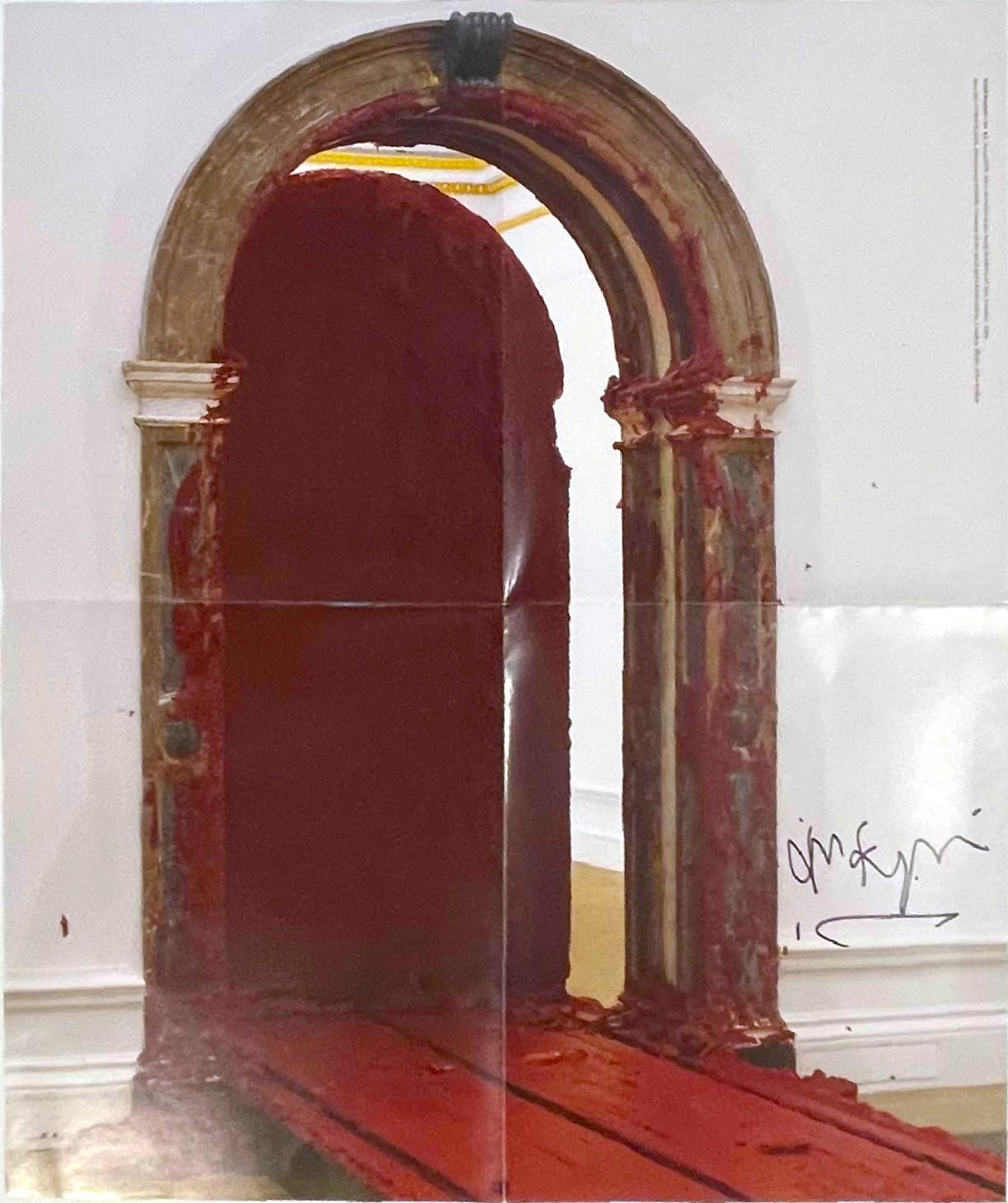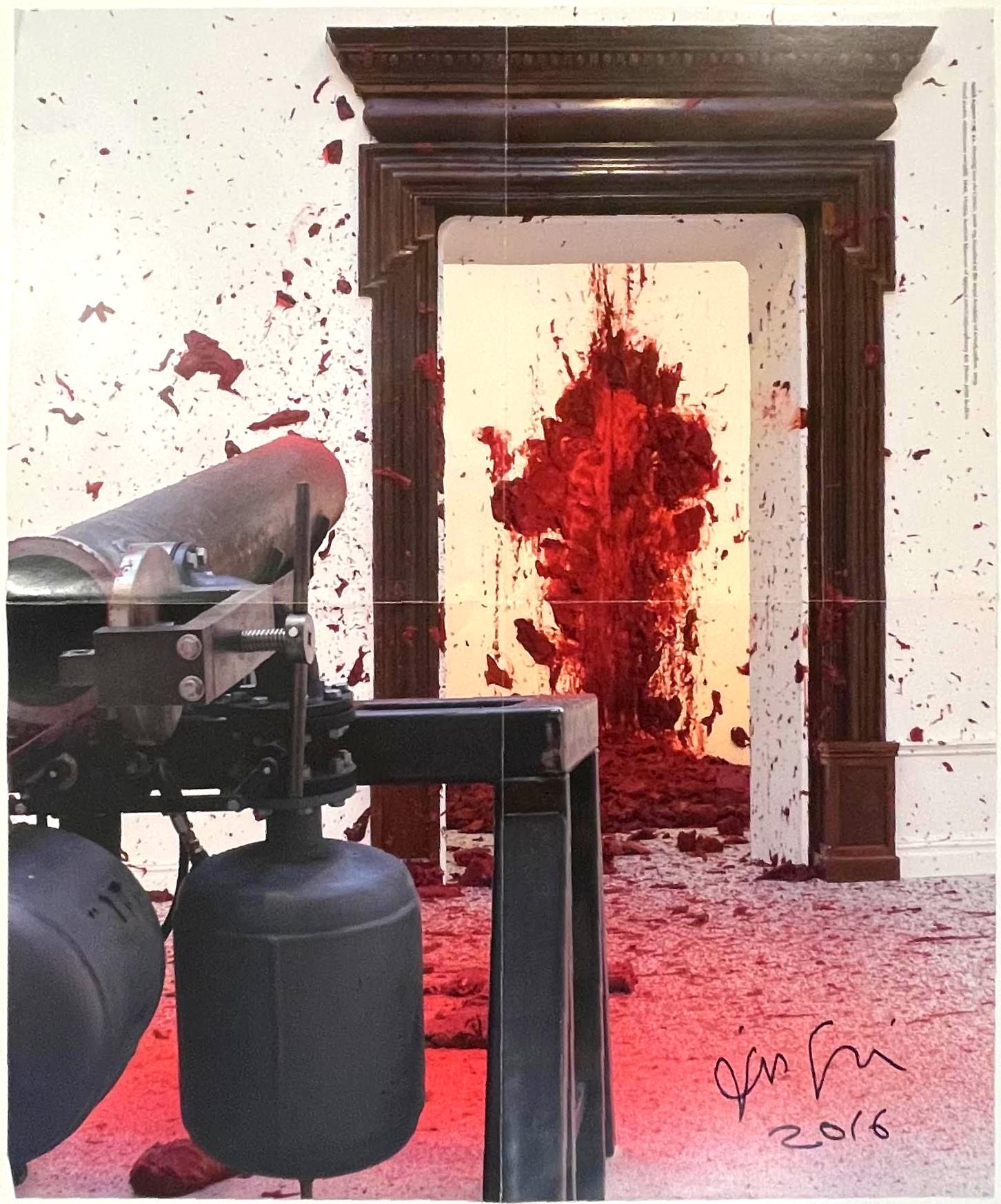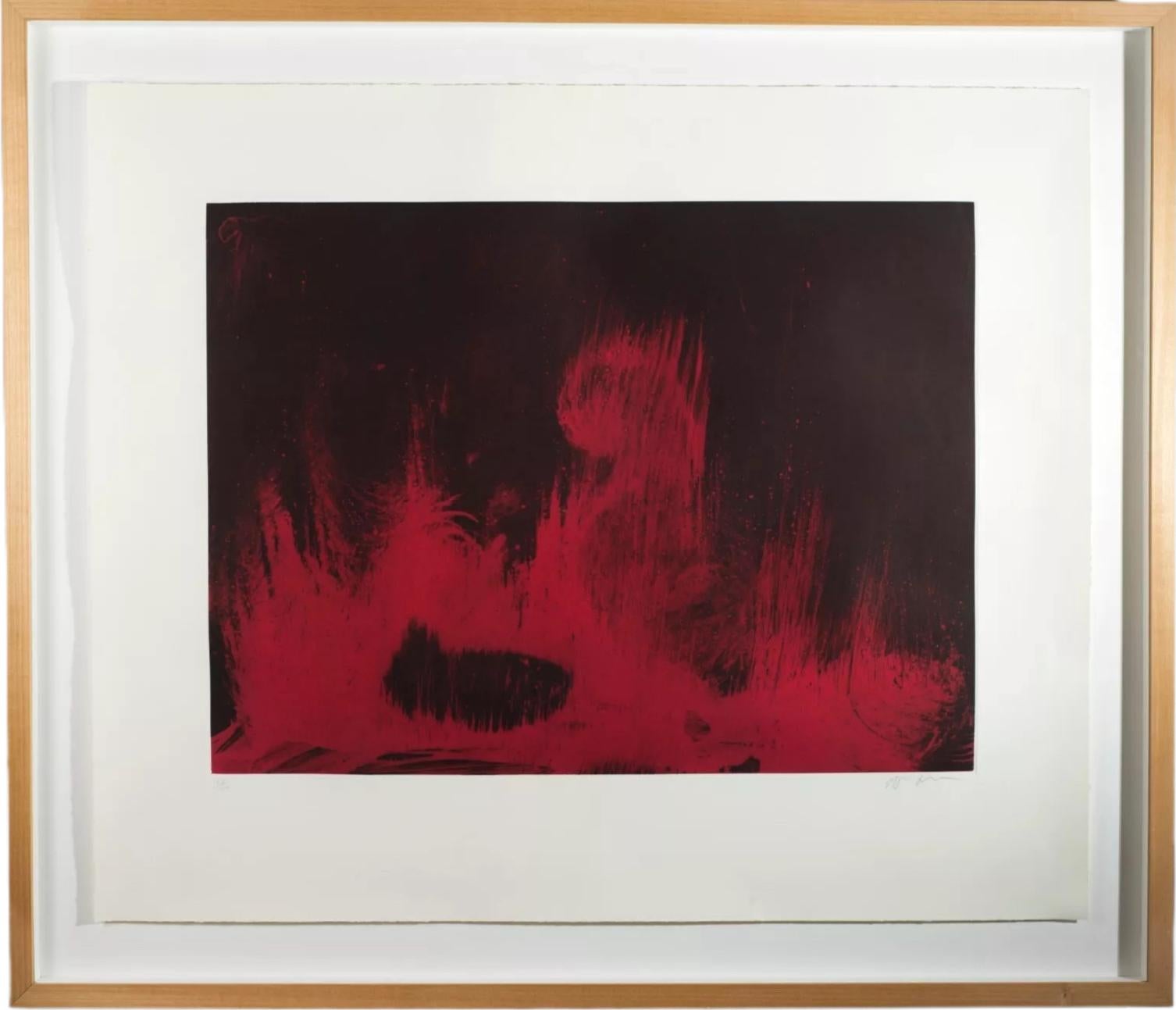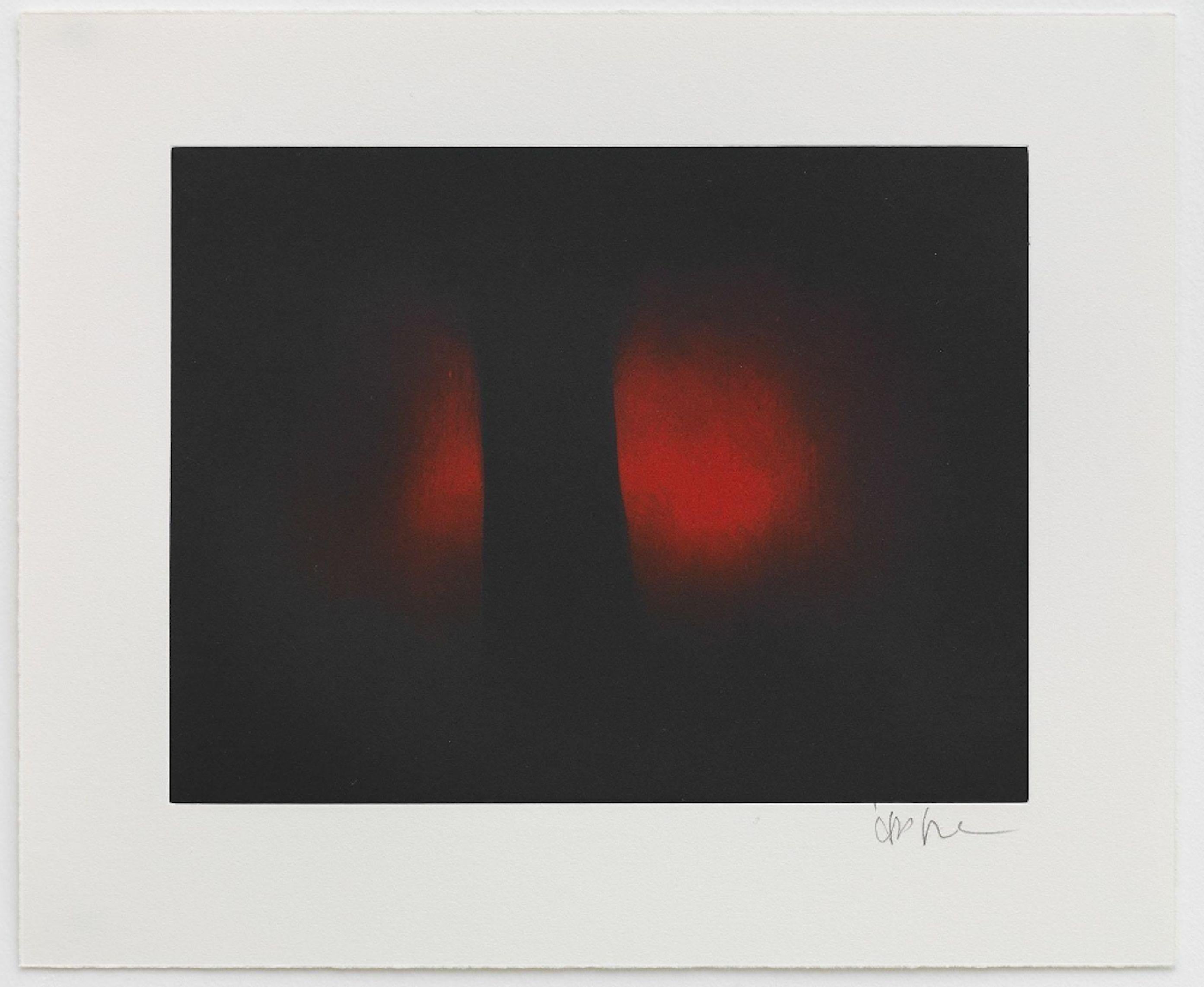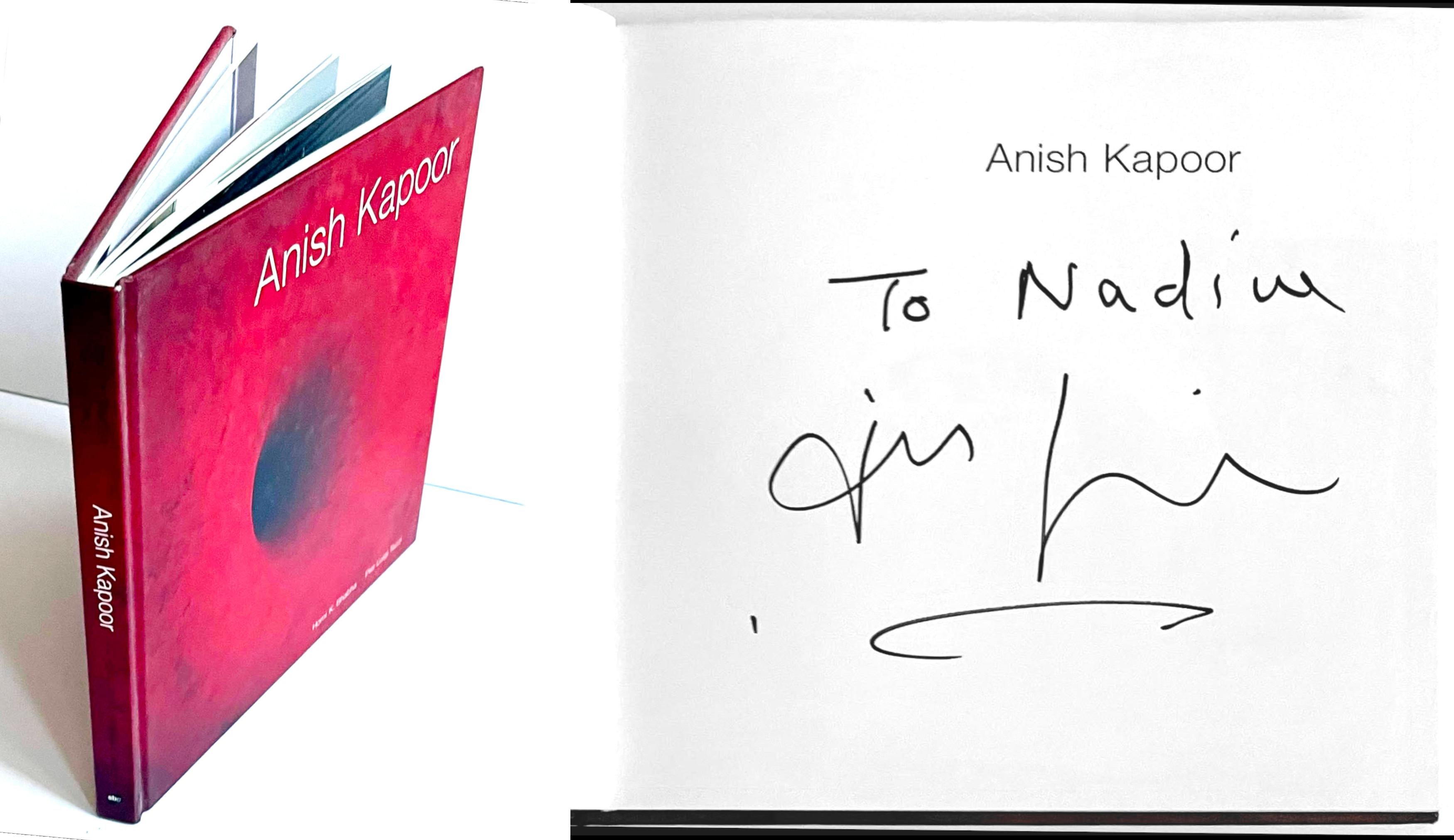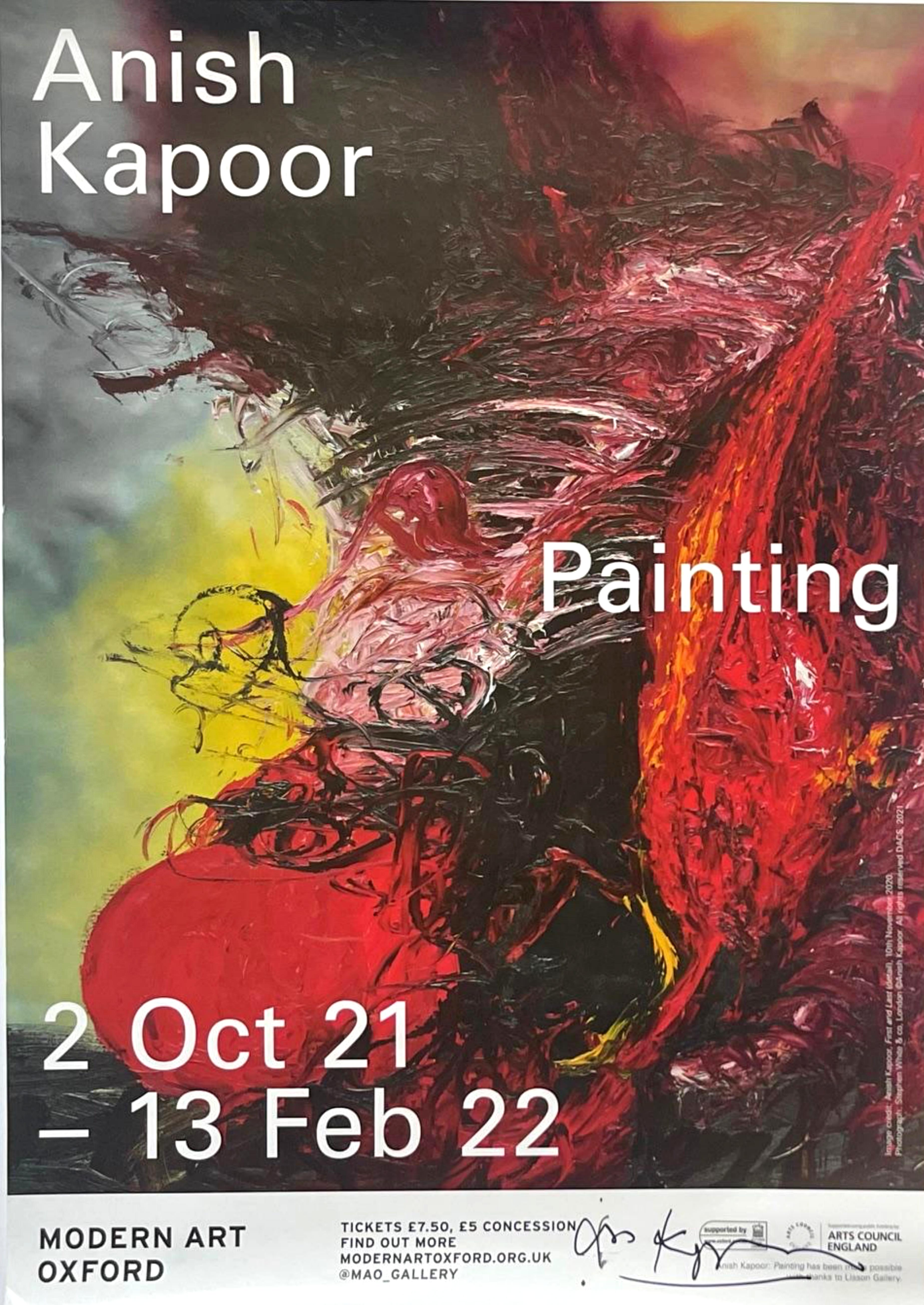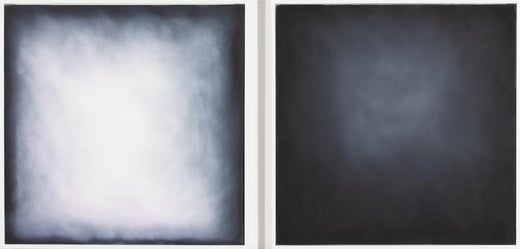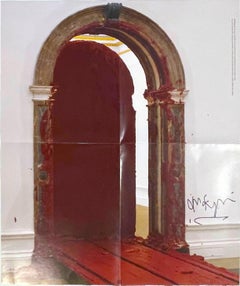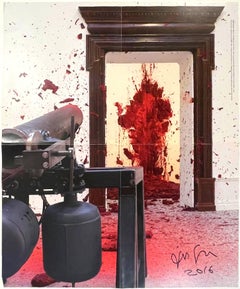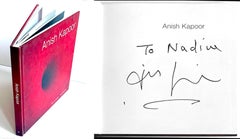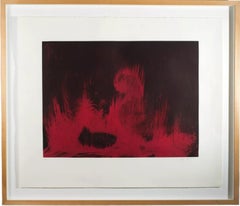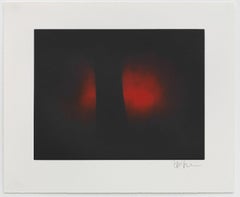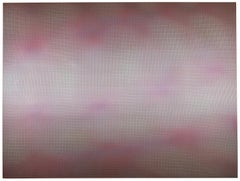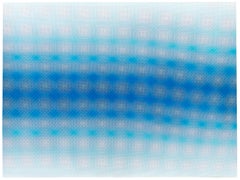Rare collectors' item:
Anish Kapoor
Venice Biennale: XLIV Esposizione Internazionale D'arte Biennale Di Venezia (Hand signed and inscribed by Anish Kapoor), 1990
HISTORIC signed poster published on the occasion of Kapoor representing Great Britain at the Venice Biennale
Offset lithograph poster (Hand signed, inscribed to Nadine and dated 2016)
Boldly signed, inscribed and dated by Anish Kapoor on the lower right front
33 × 23 inches
Unframed
Boldly signed and inscribed by Anish Kapoor on the lower right front for the present owner, Nadine, so provenance is direct.
Accompanied by gallery issued Certificate of Guarantee
This offset lithograph poster was published on the occasion of Anish Kapoor's exhibition "XLIV Esposizione Internazionale D'Arte" at the Biennale Di Venezia from May 27 to September 30, 1990. Hand signed posters by Kapoor are quite elusive.
The poster is two sided as it was published on the occasion of the artist's participation in the 1990 Venice Biennale (the verso has his lengthy biography), and it bears the original folds as issued.
British-Indian sculptor Anish Kapoor was chosen to represent Britain at the first Biennale of the 1990s. He had been exhibiting since 1980 but it was this show that brought him widespread recognition on the international stage. Sixteen huge sandstone blocks dominated the Pavilion’s main room; they were so heavy that the floor had to be reinforced with supports. Kapoor had started working in stone in the late 1980s and each block in Void Field (1989) has a hole filled with another motif in his work, the powdered blue pigment used in Indian religious ceremonies. The same vibrant tones, which was also inspired also by Yves Klein’s statement bold blue colour, were used in his low-lying slate sculpture, A Wing at the Heart of Things (1990), in the back gallery of the Pavilion; this work is now part of Tate’s collection.
“Venice is an interchange of East and West, reflecting the way Kapoor borrows from both cultures” said Henry Meyric Hughes, British Council.
Kapoor’s exhibition also wove together references to spiritualism and eroticism, with the red slit in the Pavilion's wall, entitled The Healing of St. Thomas (1989), alluding to the saint that doubted Jesus’ resurrection. Whereas the composition of a mound of anthracite coal and a fibreglass opening of Black Fire (1990) was described by Kapoor as “evidently sexual”.
Kapoor won the Premio Duemila for the Work of a Young Artist under 35, sparking controversy as he was in fact already 36 years old.
More about Anish Kapoor:
Anish Kapoor is one of the most influential sculptors of his generation. Perhaps most famous for public sculptures that are both adventures in form and feats of engineering, Kapoor manoeuvres between vastly different scales, across numerous series of work. Immense PVC skins, stretched or deflated; concave or convex mirrors whose reflections attract and swallow the viewer; recesses carved in stone and pigmented so as to disappear: these voids and protrusions summon up deep-felt metaphysical polarities of presence and absence, concealment and revelation. Forms turn themselves inside out, womb-like, and materials are not painted but impregnated with colour, as if to negate the idea of an outer surface, inviting the viewer to the inner reaches of the imagination. Kapoor’s geometric forms from the early 1980s, for example, rise up from the floor and appear to be made of pure pigment, while the viscous, blood-red wax sculptures from the last ten years – kinetic and self-generating – ravage their own surfaces and explode the quiet of the gallery environment. There are resonances with mythologies of the ancient world – Indian, Egyptian, Greek and Roman – and with modern times.
Anish Kapoor was born in Mumbai, India in 1954 and lives and works in London. He studied at Hornsey College of Art, London, UK (1973–77) followed by postgraduate studies at Chelsea School of Art, London, UK (1977–78). Recent solo exhibitions include Gallerie dell'Accademia di Venezia and Palazzo Manfrin, Venice, Italy (2022); Modern Art Oxford, UK (2021); Museum of Contemporary Art and Urban Planning, Shenzhen, China (2021); Houghton Hall, Norfolk, UK (2020); Pinakothek der Moderne, Munich, Germany (2020); ‘Surge’ at Fundación Proa, Buenos Aires, Argentina (2019); Central Academy of Fine Arts Museum and Imperial Ancestral Temple, Beijing, China (2019); CorpArtes, Santiago, Chile (2019); Pitzhanger Manor and Gallery, London, UK (2019); Serralves Museum, Porto, Portugal (2018); ‘Descension’’ at Public Art Fund, Brooklyn Bridge Park Pier 1, New York, NY, USA (2017); Parque de la Memoria, Buenos Aires, Argentina (2017); MAST Foundation, Bologna, Italy (2017); Museo Universitario Arte Contemporáneo (MUAC), Mexico City, Mexico (2016); Couvent de la Tourette, Eveux, France (2015); Château de Versailles, Versailles, France (2015) and The Jewish Museum and Tolerance Center, Moscow, Russia (2015). He represented Britain at the 44th Venice Biennale in 1990 with Void Field (1989), for which he was awarded the Premio Duemila for Best Young Artist. Kapoor won the Turner Prize in 1991 and has honorary fellowships from the University of Wolverhampton, UK (1999), the Royal Institute of British Architecture, London, UK (2001) and an honorary doctorate from the University of Oxford, UK (2014). Anish Kapoor was awarded a CBE in 2003 and a Knighthood in 2013 for services to visual arts. Large scale public projects include Cloud Gate (2004) in Millennium Park, Chicago, USA and Orbit (2012) in the Queen Elizabeth Olympic Park, London, UK and Ark Nova (2013) the world's first inflatable concert hall in Japan.
Courtesy of Lisson Gallery
Publisher
The British Council
Provenance
Boldly signed by Anish Kapoor for Nadine in April 29, 2016
